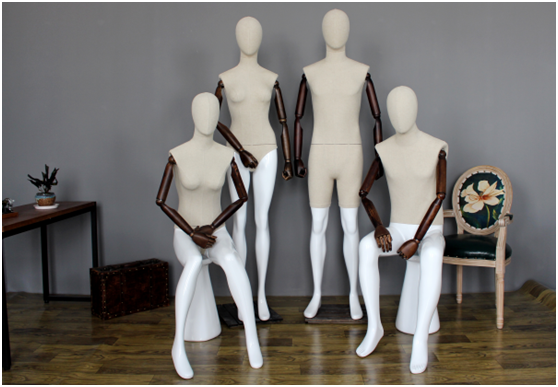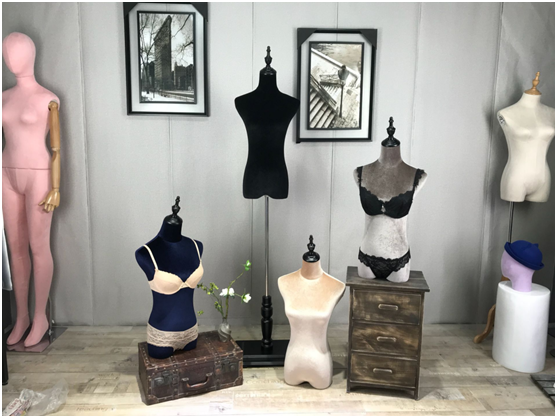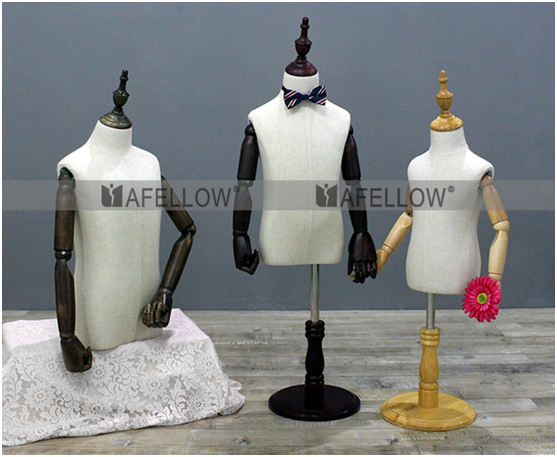The mannequins in the Dress form series are the most commonly used props for clothing designers.
If you want to make a garment from a mannequin, the first thing you need to know is: what is a dress form?
Simply put, it is a 3D model of the torso that fits the garment being designed or sewn. A dress form mannequin is the best tool when making a dress because it helps the designer place the dress on a dress and see the fit and drape of the dress as if it would appear on a real human body Same as above. Also, it helps to make adjustments and changes to the clothes.
The surface of the dress form is usually soft, the inside is foam or plastic, and the outside is covered with fabric or PU. This also allows his body to be fixed with T-pins, which is more convenient for fashion designers to fix. clothing. Dress form mannequins can often be customized with head and limbs to suit your needs. The head and limbs can be matched with wooden or dress form styles of the same material as the body.

Dress Form Mannequin Usage Guidelines
In this guide, you'll learn how to drape with dress-form mannequins. But before continuing with this guide, it's important to know a little about making clothing styles from dress form mannequins. Patterning can be done in two ways:
1. Flat pattern making
To make a flat pattern, you need to take a basic flat pattern (also known as a slant) and change it to the style you want in flat paper form. This is done by cutting, measuring and tape. For example, let's say you want to create an A-line skirt. To do this, you'll cut the skirt periodically and then pin those sections down from the waist to achieve the desired effect. Once this is done, you can copy it onto a new pattern to get a new pattern.
2. Draping pattern making
As opposed to flat patterns, this is done on dress form mannequins. It is useful in a variety of pattern making, but is especially useful for asymmetries, folds, dashes, and other design elements that are difficult to visualize in flat form.
select dress form mannequins
There are all kinds of dress form mannequins on the market, from the cheapest to the most expensive. There are standard dress form mannequins, as well as adjustable dress form mannequins. However, one of the main criteria to consider when choosing a dress form is its proportions. Therefore, it is highly recommended that you get a dress form mannequin that closely matches your proportions. To make sure you get it, you first need to thoroughly measure the size you need. It's especially important to consider your three-dimensional size and height and measurements, as you won't be able to change your bust or shorten your torso.

Of course, dress form is the most important thing you need, but it's not the only supply you need. Some of the important supplies you will need include:
tape measure
Scissors
Material in filled form (it can be batting, wool or thick fabric)
Rope for marking the pattern lines (it should be thick enough to go through the fabric)
T-pins (for securing garments on dress form mannequins)
fabric
marker pen

Drape craft
The fabric needs to be fastened to the dress form mannequin and the design of the garment can be adjusted to your liking. Then use a marker to record the position so that you can replicate your adjusted design after you remove it from the dress form.
Once you've finished designing the garment on the dress form mannequin, it's time to remove the marked fabric from the dress. Trim all parts to the desired seam allowance so you can easily sew them into the first draft of the garment. After you do this, try on the dress to see how close you are to the desired result. But don't worry if it doesn't fit perfectly, as pattern making is an iterative process.
After this first round of fitting, you can start making the changes you want. For the next step, you should keep the following in mind:
1. Make sure the clothes are in the correct position, aligning the curves exactly where they should be - chest, waist, hips, etc.
2. If there are any wrinkles or tugging, it means these parts are too tight, so you need to adjust them to fit properly.
3. You may need to try again and again until everything works and is satisfactory. You should make a draft of your design first, then cut out a new set of pattern pieces for all the changes you've made.
Draft your design
So you made all the changes and now you are finally happy with the whole. Then, it's time to draft a paper pattern to add to your collection. Take the fabric you selected for the pattern, place each pattern piece in it, with a layer of tracing paper in the middle facing down, trace each section on the fabric, not forgetting to consider any possible final alterations.
Once you're done copying, you can cut out the outline of your garment. It is advisable to add seam allowances before cutting out the pattern, so that you can sew on more fabric while sewing without making the garment smaller.
How to make clothes using a mannequin? As you can see, with just a dress form mannequin and a few important things in mind, you can make a garment perfectly. All this can be done easily with the help of dress form mannequin.







